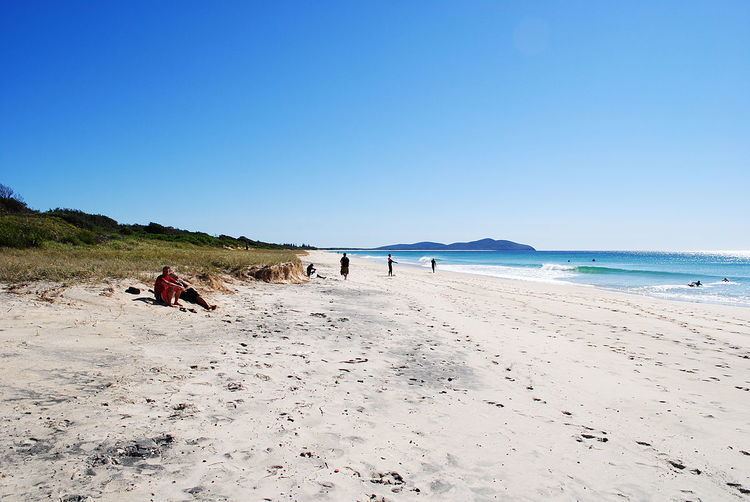Phone +61 2 6591 0300 | Area 15.67 km² Established 1992 | |
 | ||
Managing authorities See also Protected areas ofNew South Wales Address The Lakes Way, Pacific Palms NSW 2428, Australia Hours Open today · 8:30AM–4:30PMTuesday8:30AM–4:30PMWednesday8:30AM–4:30PMThursday8:30AM–4:30PMFriday8:30AM–4:30PMSaturdayClosedSundayClosedMonday8:30AM–4:30PM Similar Tea Gardens‑Hawks Nest Brid, Broughton Island, Werakata National Park, Werrikimbe National Park, Hat Head National Park | ||
Booti booti national park
Booti Booti National Park is a national park in New South Wales, Australia, 282 kilometres (175 mi), by road, north-north-east of Sydney. The holiday town of Forster-Tuncurry lies immediately to the north.
Contents
- Booti booti national park
- Booti booti national park new south wales
- History
- Geography
- Flora
- Fauna
- Activities
- References
Booti booti national park new south wales
History
The first European to inhabit the area was a Captain J. Gogerly who sailed from Forster to Sydney with loads of timber. He and some of his family are buried in the park. Mining for mineral sands took place at Seven Mile Beach from 1969 to 1975, and at Elizabeth Beach from 1969 to 1970. The park was declared a state recreation area from 30 September 1977, then a national park in 1992.
Geography
Geographically, the National Park is made up of three hill complexes – the 224 m high Cape Hawke to the north, and 169 m high Booti Hill and 96 m high Charlotte Head in the southern end. The three areas are connected by low–lying estuarine and aeolian sands. The stretch of land between Cape Hawke and Booti Hill is around 10 km long and ranges between 400 m and 3.25 km wide. It separates Wallis Lake from the ocean. Cape Hawke and Charlotte Head were once islands, which became joined to the mainland by built-up sand deposits.
Flora
654 species of native plants have been recorded from Booti Booti National Park. This formed 46 distinct plant communities within the park boundaries. 17% of the park is classified as rainforest. Seven distinct wet sclerophyll forest and ten dry sclerophyll forest communities have been recorded.
Five species recognised as threatened by the New South Wales Government occur within the park – these are Allocasuarina defungens, A. simulans, Chamaesyce psammogeton, Cynanchum elegans and Senna acclinis.
104 exotic species have been recorded from the park. Bitou bush (Chrysanthemoides monilifera var. rotundata) has infested sand dunes and cliff areas, having spread from nearby beach habitat. Lantana camara infests the rainforest at Cape Hawke, particularly disturbed habitat. Madeira vine (Anredera cordifolia) and coast morning glory (Ipomoea cairica) are vines that grow over and smother native vegetation in the park.
Fauna
Booti Booti National Park has had 210 species of bird recorded within its limits.
Activities
Activities at Booti Booti National Park include hiking, swimming, birdwatching and, during winter, whale watching. Camping sites are located at The Ruins, in the Booti Hill area at the park's southern end. A lookout is located on top of Cape Hawke.
